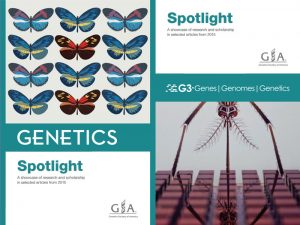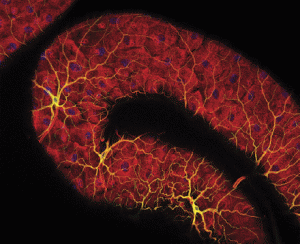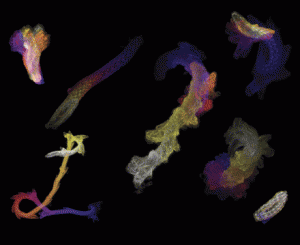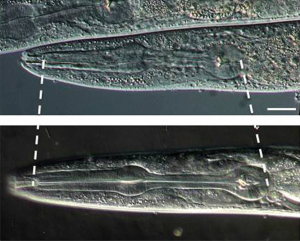Enter your address to receive notifications about new posts to your email.
Articles tagged G3 Journal
(248 results)
-
GSA Journals Spotlight 2015
The GSA Journals, GENETICS and G3: Genes|Genomes|Genetics, are proud to present our annual Spotlight booklets for research published in 2015. Each Spotlight is a showcase of the excellent research and scholarship published over the course of the year, along with a selection of striking images submitted by our authors. Browse the 2015 GENETICS Spotlight. Browse the 2015 G3 Spotlight. …
-
New in G3: glucose biosynthesis, neural tube defects, and seizure suppression
Check out the October issue of G3! Table of Contents Call for Papers Multiparental Populations: A Call for Papers G3 October 2016 6:3015; doi:10.1534/g3.116.035022 Full Text | Full Text (PDF) Investigations A Drosophila LexA Enhancer-Trap Resource for Developmental Biology and Neuroendocrine Research Lutz Kockel, Lutfi M. Huq, Anika Ayyar, Emma Herold, Elle MacAlpine, Madeline Logan,…
-
Friendly dogs with floppy ears: The domestication syndrome
The mild temperament that distinguishes the family dog from its wolf ancestors is just one of a whole array of traits that seem to have evolved during domestication. Domestication syndrome refers to the suite of characteristics commonly observed in domestic animals, including docility, shorter muzzles, smaller teeth, smaller and floppier ears, and an altered estrous…
-
New in G3: coffee genome, dog diseases, and mouse infertility
Check out the September issue of G3! Investigations Retrotransposon Proliferation Coincident with the Evolution of Dioecy in Asparagus Alex Harkess, Francesco Mercati, Loredana Abbate, Michael McKain, J. Chris Pires, Tea Sala, Francesco Sunseri, Agostino Falavigna, and Jim Leebens-Mack G3 September 2016 6:2679-2685; Early Online June 24, 2016 doi:10.1534/g3.116.030239 Abstract | Full Text | Full Text…
-
New in G3: mushrooms, morphogenesis, and micronuclei
Check out the August issue of G3! Investigations Genetic Architecture of Resistance to Stripe Rust in a Global Winter Wheat Germplasm Collection Peter Bulli, Junli Zhang, Shiaoman Chao, Xianming Chen, and Michael Pumphrey G3 August 2016 6:2237-2253; Early Online May 25, 2016 doi:10.1534/g3.116.028407 Abstract | Full Text | Full Text (PDF) | Supplemental Material Meiotic…
-
Meet the editors at TAGC
Got a hot manuscript or a burning question for a GENETICS or G3 editor? Just want to talk about scholarly publishing in general? Here’s how you can track down an editor at The Allied Genetics Conference this week: Watch out for ribbons GENETICS and G3 Editors will be wearing silver “Editor” ribbons on their name…
-
Genetic test helps ponies leave the past behind
For the past several decades, Shetland ponies’ collective past had caught up with them. A portion of the population of these miniature horses is affected by atavism, a phenomenon in which ancient characteristics are accidentally revived by mutations. Traits reincarnated in this way sometimes interact disastrously with the genetic background of the modern organism. For…
-
New in G3: Drosophila doublesex, Shetland pony SHOX, and SNP-SNP interactions
Check out the July issue of G3! ForestPMPlot: A Flexible Tool for Visualizing Heterogeneity Between Studies in Meta-analysis Eun Yong Kang, Yurang Park, Xiao Li, Ayellet V. Segrè, Buhm Han, and Eleazar Eskin G3 July 2016 6:1793-1798; Early Online May 18, 2016 doi:10.1534/g3.116.029439 Abstract | Full Text | Full Text (PDF) Sex Differences in Drosophila…
-
How bacteria dodge new antibiotic candidates
Antibiotics, a vital tool for fighting infections, were originally products of nature—the first antibiotic was serendipitously discovered in mold contaminating a bacterial culture. As antibiotic resistance becomes an increasingly serious threat, scientists are attempting to wring another type of pathogen-fighting drug from the wild: antimicrobial peptides. Antimicrobial peptides, or AMPs, are found in almost every…
-
Stretchy cells underlie organ development
Animals’ complex body plans come at a cost: their development is elaborate and must be delicately controlled. One critical aspect of development is size and shape control—every organ needs to fit in its place. The process requires the orchestration of a dizzying number of pathways, and understanding even a single component is far from trivial.…
-
New in G3: Cotton, Candida, and Chlamydomonas
Check out the June issue of G3! Investigations Sdt97: A Point Mutation in the 5′ Untranslated Region Confers Semidwarfism in Rice Jiping Tong, Zhengshu Han, Aonan Han, Xuejun Liu, Shiyong Zhang, Binying Fu, Jun Hu, Jingping Su, Shaoqing Li, Shengjun Wang, and Yingguo Zhu G3 June 2016 6:1491-1502; Early Online April 29, 2016 doi:10.1534/g3.116.028720 Abstract…









![Molecular model of penicillin, the first antibiotic discovered. Later, antimicrobial peptides were also found to have antibiotic properties. By Science Museum London / Science and Society Picture Library [CC BY-SA 2.0 (http://creativecommons.org/licenses/by-sa/2.0)], via Wikimedia Commons.](https://s36063.pcdn.co/wp-content/uploads/2016/06/Molecular_model_of_Penicillin_by_Dorothy_Hodgkin_9663803982-300x212.jpg)

